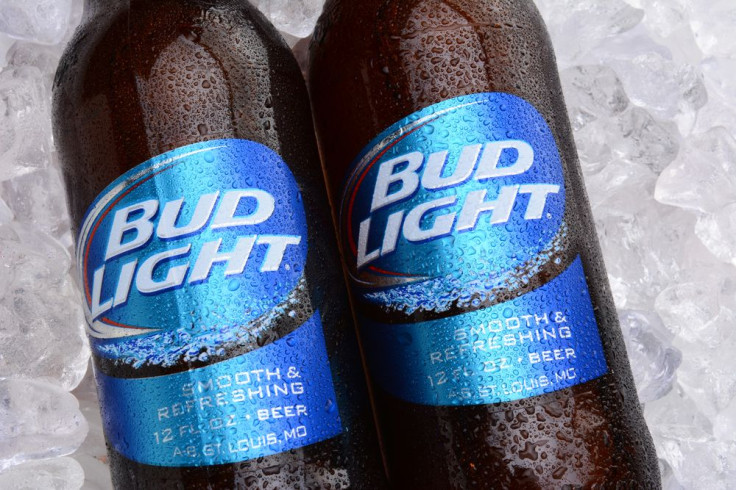Is Light Beer Really Healthier? A Closer Look At America's Most Favorite Beer

Anyone who drinks beer can probably tell a story of the way their palate changed while growing up. I remember going through phases, from 40-ounce bottles of malt liquor (the bottom of the beer totem pole, if it should even be allowed on it) to light beers, and finally, to dabbling in craft beers. As I made the transition from light to craft, I couldn’t help wondering, “Why do people drink all this light beer? It takes more to get a buzz and is virtually tasteless. Certainly, craft beers have a higher value, right?” By that point, I had already come to terms with craft beer’s superior taste (I’m not a beer snob, I swear). But are light beers really healthier?
According to the history books, or at least Mental Floss, light beer has been around for ages. But it wasn’t until 1967 when Joseph L. Owades, a biochemist at Rheingold Breweries in Brooklyn, decided it was time to make Gablinger’s Diet Beer, the first beer marketed to people who wanted to drink beer without gaining weight. Today, beer companies still market their light beer as “refreshing,” and as “the great taste that won’t fill you up and never let you down.” And indeed, at 95 to 120 calories per bottle, it probably won’t fill you up.
Let’s face it. Most people drink to get drunk, if not only a buzz — moderate consumption is best, in case you were wondering — and brewing low-calorie beer also comes with the added effect that you’re going to get a low alcohol percentage as well. Your typical light beer has about four percent alcohol by volume. This combination basically encourages people to drink it like water. Some of them will overdo it, consuming more alcohol than they intended to and more calories in the long run.
By comparison, a bottle of Flying Dog’s Snake Dog IPA has 188 calories and is 7.1 percent alcohol by volume. At only about 68 calories more, you’ll also get extra alcohol by volume and a better flavor profile. Though it’s arguable whether drinking this or any non-light beer will help you manage your alcohol intake, it will make you feel fuller, and that’s not necessarily a bad thing if you’re trying to pace yourself better. Plus, you’ll get awesome taste, depending on what you get.
Questions regarding the speed of intoxication and taste of light beers, however, only touch on the head of the beer. So, let’s get into the body.
Light beer, specifically Budweiser and Bud Light (both are considered light by Anheuser-Busch InBev’s head of brewing), are both brewed with the same ingredients: carbon-filtered water, barley malt, rice, hops, and lager yeast, Mental Floss reported. The company’s specially bred barley is heated with the water and rice in a process called mashing, which releases the sugars from the starchy grains. Both Budweiser and Bud Light go through different heating lengths, resulting in their slightly different flavors. The ensuing liquid, called a wort, is then boiled with the hops. Once done, the yeast is added and a complex fermentation process begins. The end result is the company’s signature taste.
That process on its own has been a subject of debate among health enthusiasts. Vani Hari, author of the blog Food Babe, recently wrote an article about her search for full lists of ingredients in some of America’s most popular beers. According to her research, many of them contained genetically modified (GMO) corn, rice, and other ingredients like high-fructose corn syrup and carcinogenic caramel coloring. It’s still unclear how GMO foods affect the population, but they’ve been highly contested, with some evidence suggesting they influence gene expression, while other science suggests they could be toxic to certain organs. Considering that most GMO crops are made to be pesticide resistant, it’s unclear whether we’re consuming those toxic chemicals.
On a less controversial tone, Budweiser is brewed in mostly the same ways as other beers. But there are some things to consider. For one, light beers like these are brewed with minimal ingredients and are also made to be light, so they end up with almost no nutritional value. Meanwhile, Samuel Adams Boston Lager has 2 grams of protein and 270 milligrams of potassium, while Abita’s Purple Haze — brewed with raspberry puree — has 1.8 grams of protein. Moreover, some evidence has suggested that darker beers, such as Guinness, are better for you, as they contain similar flavonoids (antioxidants) to red wine, and may help with fighting blood clots in arteries.
Most people who drink light beer will probably stick with it for the rest of their lives — darker beer is too hoppy, they say — but in the same way that a slightly more expensive pair of shoes may be a worthy investment, it might incline you to invest in a better beer.



























